Click on images to enlarge
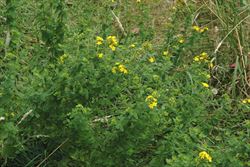
infestation (Photo: Rob and Fiona Richardson)

habit (Photo: Rob and Fiona Richardson)
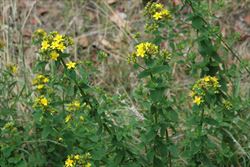
habit (Photo: Rob and Fiona Richardson)
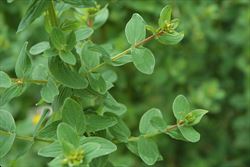
stems and leaves (Photo: Rob and Fiona Richardson)

close-up of winged stem and leaf undersides (Photo: Rob and Fiona Richardson)
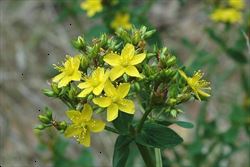
flower cluster (Photo: Rob and Fiona Richardson)

close-up of flowers (Photo: Rob and Fiona Richardson)
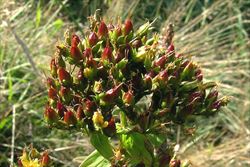
immature fruit (Photo: Ros Shepherd)
Scientific Name
Hypericum tetrapterum Fr.
Family
Clusiaceae (Queensland, New South Wales, the ACT, Victoria, Tasmania, Western Australia and the Northern Territory)Guttiferae (South Australia)
Common Names
European perennial St John's wort, square stemmed hypericum, square-stalk St. John's wort, square-stalked St. John's wort, square-stem St. John's wort, square-stemmed hypericum, square stemmed St John's wort, square-stemmed St John's wort, St. Peter's wort, winged St John's wort
Origin
Native to north-western Africa (i.e. northern Algeria), Europe (i.e. Denmark, Ireland, the UK, southern Sweden, Austria, Belgium, the Czech Republic, Germany, the Netherlands, Poland, Slovakia, Switzerland, western Ukraine, Albania, Bosnia and Herzegovina, Bulgaria, Greece, Italy, Macedonia, Romania, Slovenia, France and Spain) and western Asia.
Naturalised Distribution
Naturalised in some parts of south-eastern Australia (i.e. in Tasmania and southern Victoria).
Notes
St. Peter's wort (Hypericum tetrapterum) is regarded as an environmental weed in Victoria and Tasmania. This species is of most concern in moist areas adjacent to streams and swamps in the temperate regions of Australia. It forms very dense stands, particularly in riparian vegetation, and appears to be as strongly competitive as St John's wort (Hypericum perforatum).
St. Peter's wort (Hypericum tetrapterum) appears on some local environmental weed lists in southern Victoria (e.g. in Knox City and Kingston City) and is seen as a potential threat to one or more vegetation communities in this state. It has also been recorded from several locations in the Huon Valley, in southern Tasmania, and has potential to grow in a range of environments in this state.

